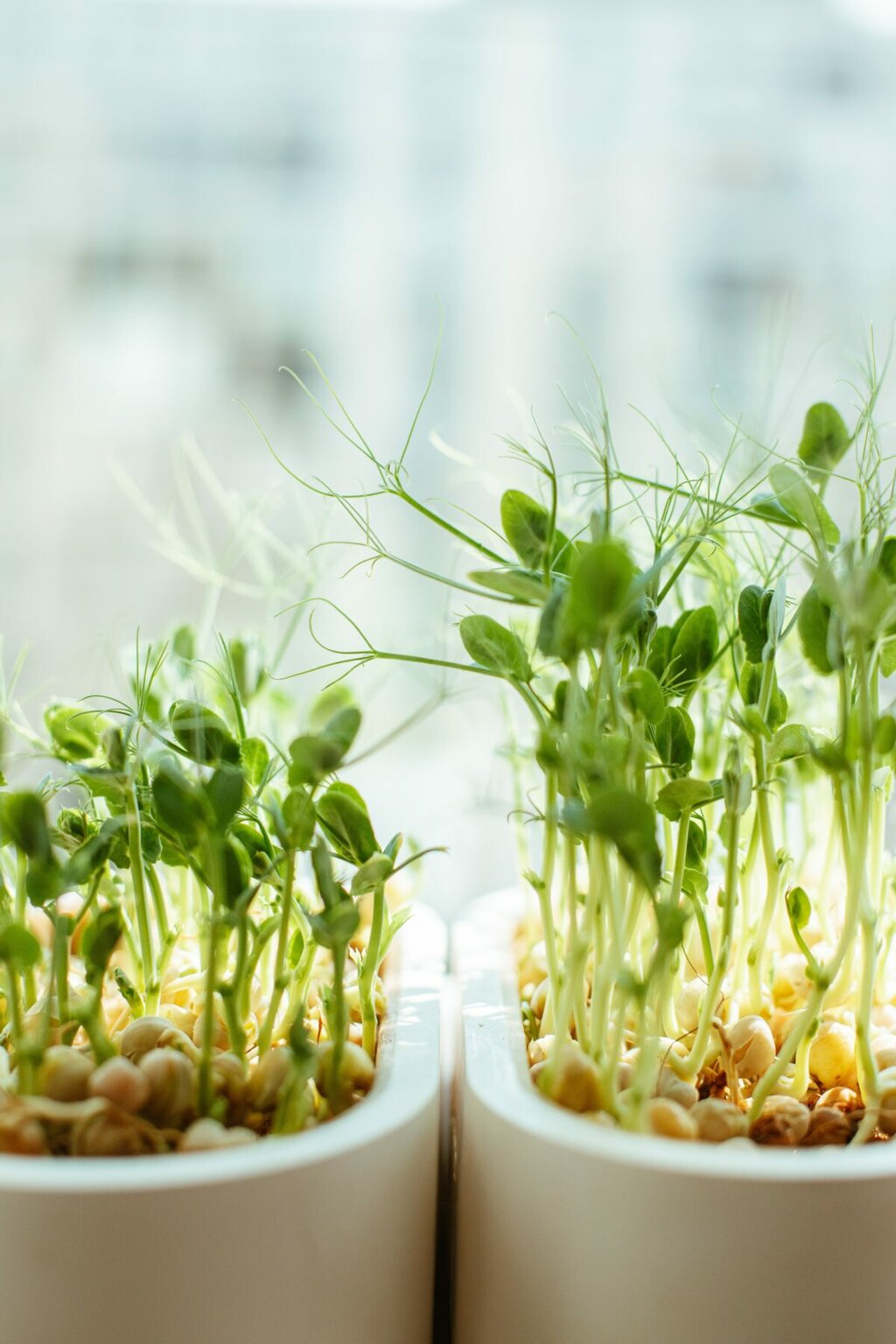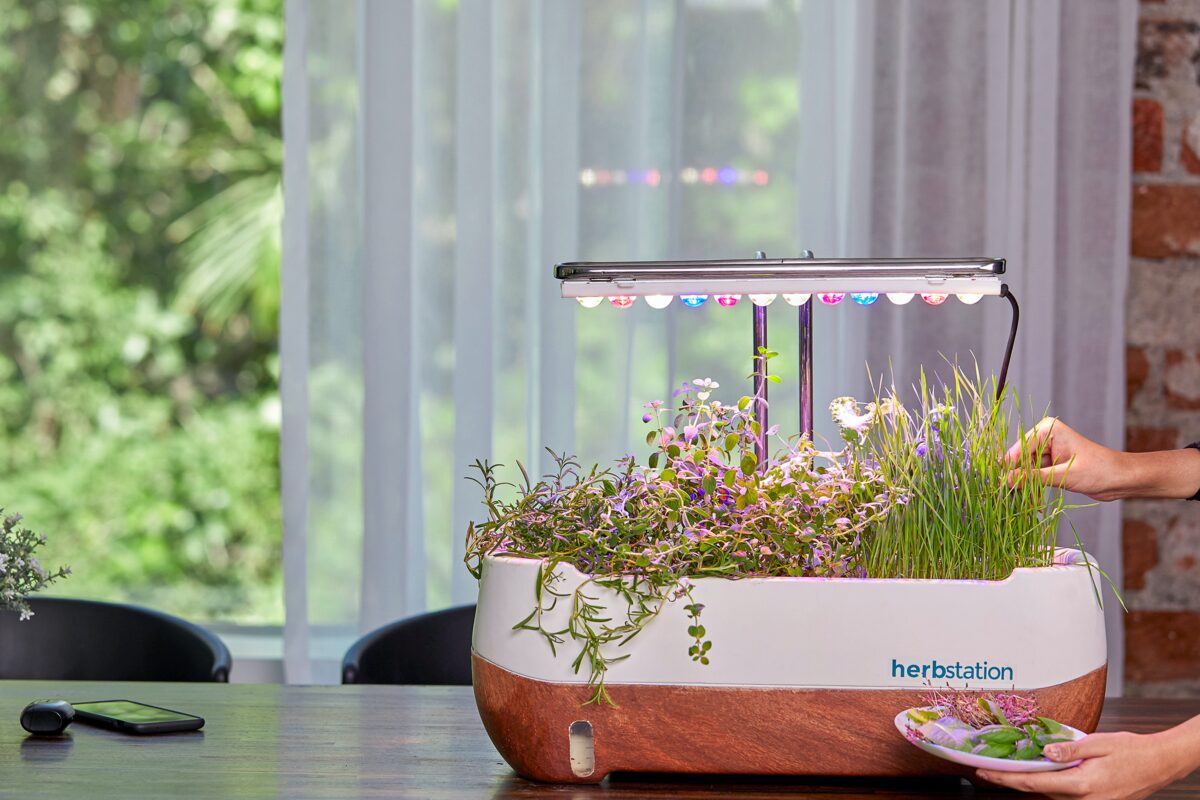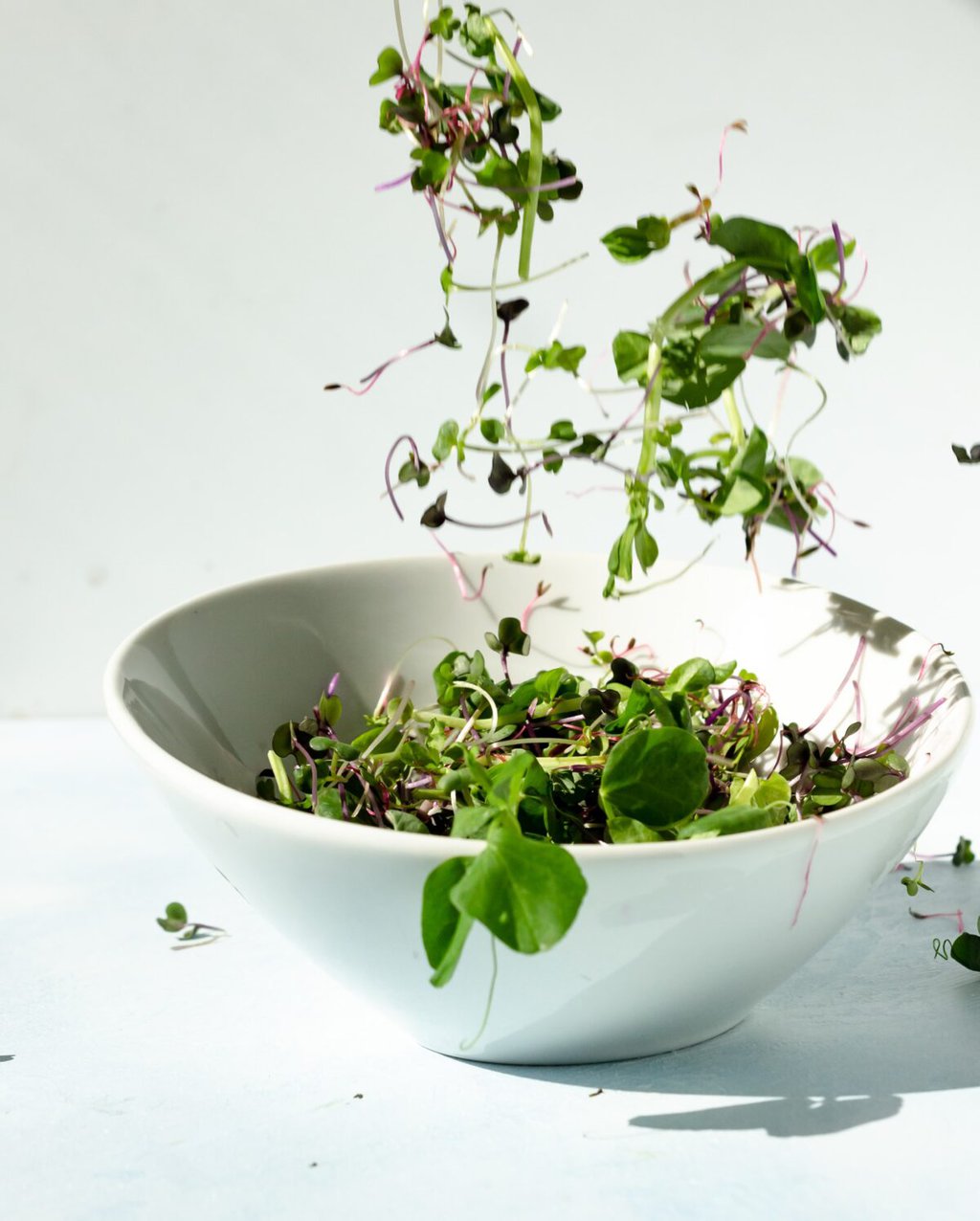Microgreens are super nutritious and easy to add to most meals, look pretty, plus growing microgreens is super easy and convenient to grow indoors year-round. All you need is a windowsill, light (natural sunlight or artificial will work), seeds, and a container or method to grow microgreens, no green thumb is required! You can go from seeds to microgreens on your plate in less than a couple of weeks, yes, it is that easy and you can do it too!
What Are Microgreens

If you are unsure of what microgreens are you, you are not alone even though you have probably seen and eaten them at a restaurant or seen them in the grocery store and wondered what the point was for them. Microgreens have been gaining a slow but steady following since being introduced in the 1980s in restaurants in California. Microgreens are little seedlings from edible plants that are enjoyed while young to add color, flavor, and nutrition to dishes.
Microgreens is a general name for all of the baby vegetables that are between a sprout and a baby leaf vegetable. Microgreens are harvested while still young and you can enjoy the whole thing, stem included, which is one reason why growing microgreens is more simple than not. In case you are wondering, sprouts are not microgreens, as microgreens are just the baby plant and sprouts are from grain, wheat, or bean seeds.
Some variations of microgreens include radish, broccoli, carrot, dill, and many more. Microgreen flavors also vary across the type of microgreens, which is important to note when growing microgreens. From spicy and bitter (think arugula) to mild and neutral such as carrots. Microgreens can be enjoyed as a garnish, part of a meal, or on their own, it can even be a palate cleanser between courses.
Growing microgreens are an easy nutrient-dense addition to any meal, since the plant is in its baby stage, there are a lot of nutrients packed into a smaller plant. So, you are able to get the benefits of a mature vegetable by eating way less and as a garnish and no less! Microgreens all vary in their nutrient content depending on the plant but most of them are high in potassium, iron, zinc, magnesium, and copper as well as antioxidants.
Since microgreens are so nutrient-dense and they are easy to add to most meals as well as grow indoors, they are ideal for most people. Even if you are not a vegetable lover, you might be surprised at how much you enjoy eating and growing microgreens. Throw them on your eggs in the morning, salad at lunchtime or add them to your dinner plate as a garnish to meat, starches, or even as a little extra to your veggies or salad, you might be surprised at how easy it is to add them to almost any meal. Bonus that growing microgreens look pretty and will give your newly green thumb a boost of confidence.
Read More: Perennial Gardens: 5 Beautiful Plants That Will Thrive Anywhere
Tips and Tricks to Growing Microgreens

Growing microgreens are one of the easiest crops to grow, which is great if you are not a gardener. Microgreens are not too finicky, don’t need a lot more than water and sunlight, and are extremely fast-growing. So you get to enjoy the fruits of your labor sooner than later and can literally watch them grow overnight. Luckily, you do not need a lot of equipment or tools to grow microgreens at home successfully. There are kits you can buy that make it super convenient to have everything ready at your fingertips. Once you get the hand of growing microgreens you will realize how easy it can be.
If you want to get more out of growing microgreens you can also look into a hydroponic system to grow your indoor microgreens. Hydroponic systems use the same simple principle of water and sunlight while offering the ability to grow several plants at one time in a vertical indoor garden. These can be small enough to sit on your countertop, add some greenery to your office, or even on a wide windowsill. If you live in an area that does not get enough sunlight during the winter or don’t have window space available, there are ones available that have built-in lights, so it is completely self-containing.
Growing microgreens can be simple enough but you will still need to foster the growth of the microgreens. Make sure that the soil or planting pod is always moist, it is vital for growing microgreens that the roots are constantly wet. It does not have to be drenched in water at all times, but if it starts to look wilted, you know it is time to water it. Simply touch the soil and make sure your finger is damp and you are good to go. Also, as the seasons change you might need to change the location of where you grow your microgreens. It is vital that when growing microgreens there is plenty of direct sunlight.
Read More: Gardening With Kids: 5 Fun Ways To Get Your Kids Involved
What You Need To Grow Indoor Microgreens

Luckily, you don’t need a lot to succeed at growing microgreens indoors or even outdoors. You can get away with the bare minimum of a container, material for the seed to attach, seeds, and a place where the microgreens will get sunlight, yes it really is that easy! Growing microgreens can be done either directly in water, soil, or planting pod which is an alternative to soil. Planting pods are often made from organic materials that mimic soil, without the mess and bugs. Soil is the most common way to go, however, hydroponic growing can be quicker, less messy, and easier to upkeep when growing microgreens, especially when indoors.
If you want to grow more than just a few microgreens, an in-home hydroponic could be the right fit for you. Similar to the setups above a hydroponics system uses water and sunlight (or artificial light) to grow indoors. Growing microgreens in a hydroponic is a self-contained system and you can grow dozens of microgreens in a very small footprint. Great for those who prefer to be more hands-off and want to have a wider variety of microgreens that can be enjoyed even as they keep growing.
Otherwise, you need a container, for growing microgreens a simple tray that has holes for drainage, a location that gets enough sunlight throughout the day, and seeds to grow. It is important to give the seeds room to grow and flourish, don’t overcrowd the microgreen seeds when planting, and provide enough space for them to grow up and out.
Since growing microgreens is pretty quick you will be able to enjoy the fruits of your labor within a week or so. It is best to harvest and enjoy your microgreens immediately, but they do also keep for a short period of time in the fridge. If you are unsure of what to add them to, just add them to every meal as a garnish, especially when you have more than you planned. For a more in-depth, step-by-step guide we recommend this Victory Garden blog post, a simple and thorough guide for even those with a black thumb.
Read More: How To Create A Simple Indoor Garden And Gather Wellness Benefits
Growing microgreens indoors is a wonderful way to test out your green thumb and get confident with learning to grow your own food, with baby steps. There is something really special about being able to eat something you grew yourself and growing microgreens are the perfect first step and amazing for you at the same time. Add them to the dish you bring at your next potluck, or share some with neighbors or friends if you find yourself with more microgreens than you are able to enjoy.
WANT TO READ MORE?
Check out 7 Helpful Tips to Get You Indoor Gardening.
GET MORE FROM DAILY MOM, PARENTS PORTAL
Newsletter: Daily Mom delivered to you
Facebook: @DailyMomOfficial
Instagram: @DailyMomOfficial | @DailyMomTravel
YouTube: @DailyMomVideos
Pinterest: @DailyMomOfficial
📌 LOVE IT? PIN IT!📌

Photo Credits: Unsplash, Pexels
Sources: Healthline








































